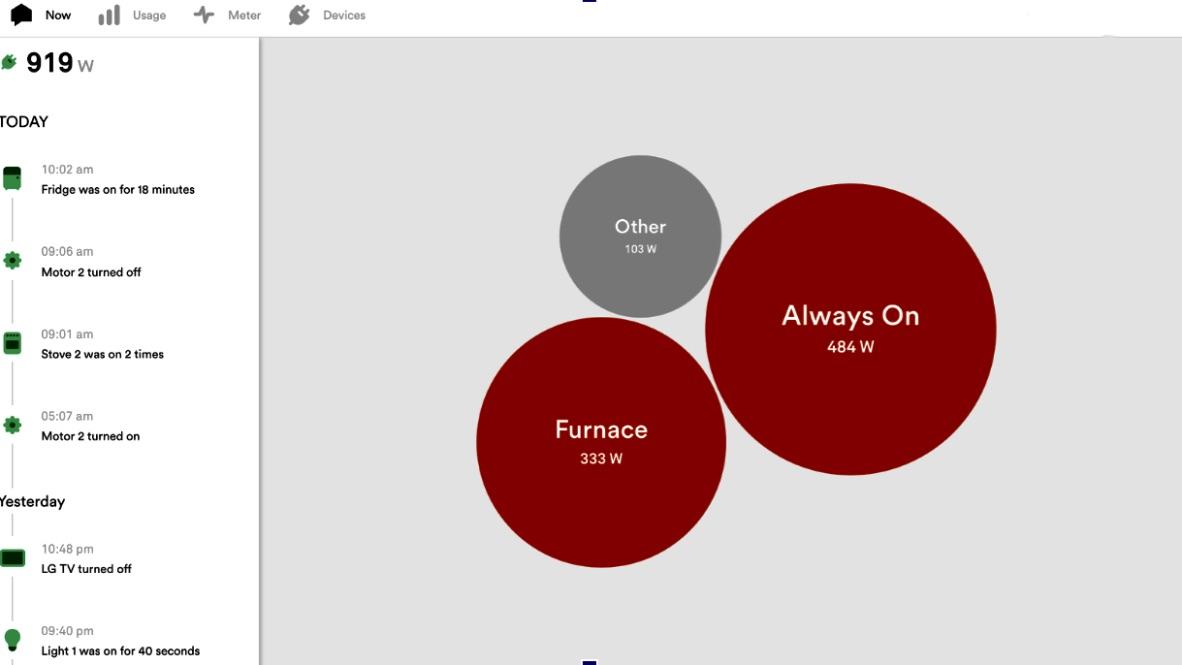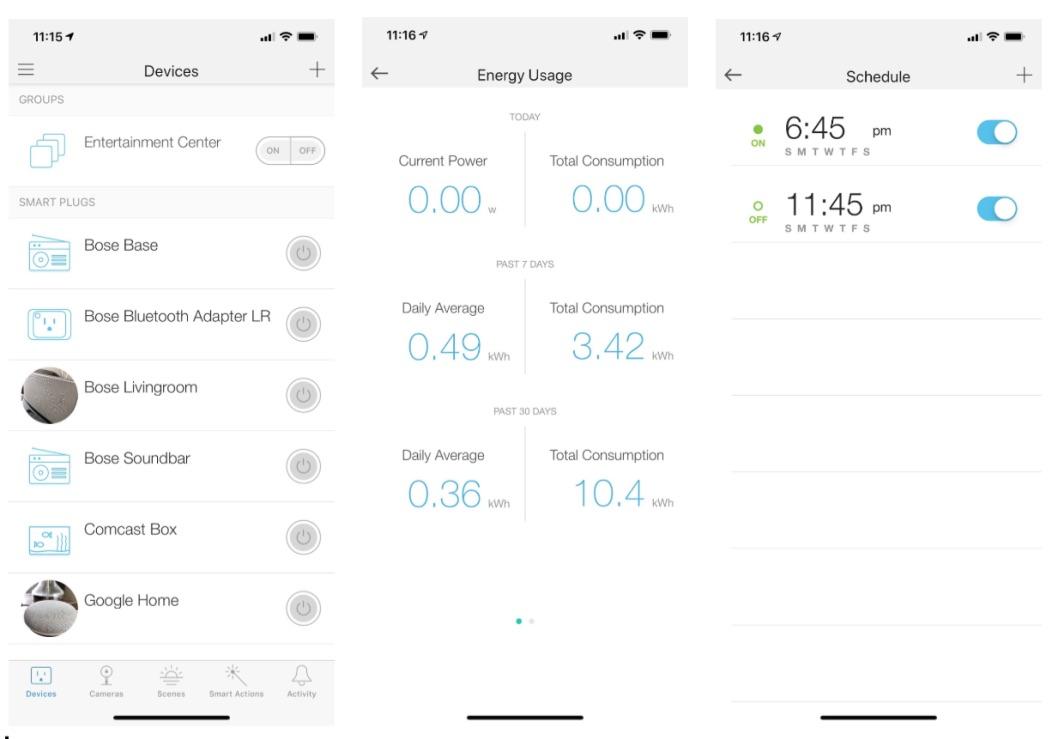These days, people spend a lot of energy talking a lot about energy. There are debates about climate change, carbon emissions, and renewable energy – and well there should be, but some of these conversations can seem quite removed from day to day life. So let’s have a look at five ways to bring these conversations into real life with a practical focus on making a difference both financially and environmentally.
#5 Energy Monitoring & Metering
For many things in life, it’s just a fact that you can’t change what you can’t see. The Sense Energy Monitor is a great place to start your energy efficiency journey. It allows you to see in detail what specific appliances or energy loads are costing. It has a very simple Web interface, a great mobile app and my experience with it has been absolutely illuminating. It’s an investment, but for us, it will pay for itself in about 6-8 months.
What have I learned from my Sense Energy Monitor?
- My Comcast DVR was a ridiculous energy hog, so we put it on a smart power strip with a schedule (see #4)
- My dryer costs 3x what my refrigerator costs per year to run. ($75/year vs $24/year). When we upgrade the dryer to a heat pump, it will save a lot of power. (See #2)
- Phantom power was ~15% of my total electricity cost. See #4.
- My gas furnace is still an electricity hog. (Also, see #2)
- LED lights really do matter. One old bathroom light we hadn’t upgraded, when on, was typically 50% of my energy load.

Learnings & Recommendations:
Our energy use mindset changed once Sense made our energy use visible, transparent, measurable and goal based.
#4 Smart Smart Home Tech (Phantom Power)
Even if you don’t or can’t measure your power, phantom power sucks, literally. It sucks power, energy, and money right out of your pocket, and you get nothing in return except a higher carbon footprint. That’s where TP-Link comes in with their line of Smart Plugs. There are other smart plugs on the market, but I love the Kasa HS300 power strip. You can individually control and schedule specific items, say, in your entertainment center. While they are a bit pricey, the convenience paired with the energy savings and smart home capabilities provides ample justification for the price.
Here’s a couple of screenshots from the app, where you can track energy use at the device level, schedule things to go on and off (like a DVR), set timers and more. You can also integrate these with smart speakers.

Phantom power can become a thing of the past if you can identify and then control the sources of phantom energy consumption.
Learnings & Recommendations
TVs older than about 4 years, DVRs, and Printers turn out to be surprising culprits. Buying two of these smart power strips and 4 smart plugs helped us cut about 15% of our monthly power budget, and gave us some great smart home upgrades. All without compromising the quality of life.
https://www.kasasmart.com/us/products/smart-plugs/kasa-smart-wi-fi-power-strip-hs300
https://www.amazon.com/Kasa-Smart-Power-Strip-TP-Link/dp/B07G95FFN3/
#3 Renewable Energy: No Installation Required
We’re actually blessed in Colorado with reasonable electricity rates and a utility provider that is conscious of the role they play in sustainability efforts. What I didn’t realize until I started tracking electrons was that Xcel Energy provides a few different ways to use renewable energy sources, no installation required.
We added Wind as our power source for 100% of our energy with a few mouse clicks. For us, this adds about 10% to our bill (say, $10/mo), which we’ve more than offset with our elimination of phantom power. In fact, just turning off the printer when we aren’t using it paid for more than half of this addition. Upgrading a few lights and putting our Comcast box on a schedule paid for the rest. We are 100% powered by renewables. It feels great, and it helps Xcel pave the way for more smart power investments, less pollution, and greater stewardship of the only planet we’ve got.
Learnings & Recommendations
Xcel Energy Windsource is just one of several programs you can opt into to reduce your carbon footprint and help manage costs. Time of use pricing has also helped us cut our power bill despite the slight premium we pay for renewable energy. It’s a no-brainer.
#2 Heat Pumps
Ok, this one is amazing. It’s not quick, but I still think it’s worth mentioning. I had no idea, but there’s a revolution happening in home heating and cooling (e.g. mini-split heat pumps), as well as clothes drying and hot water heating. Heat pumps. It turns out it’s a lot more efficient to move heat around than it is to burn something to make it. The future will be more comfortable, more efficient, more cost effective and more environmentally friendly.
Our current natural gas forced air furnace consumes both a fair amount of gas and a relatively large amount of electricity. It uses about 335 Watts when it’s on, in addition to the gas. This translates to about 10% of our electricity bill in winter months – for our natural gas furnace. Add to this that we have only a single zone, so we often have a reasonably comfortable main floor, a cold basement and a toasty upstairs, or some variation of this. We have a smart thermostat, but there’s not a lot it can do to make us comfortable with a single zone.
Enter “ducted ductless mini-split heat pumps.”
Skip to about 4 minutes in to see this in action, but imagine a retrofit that adds zones, comfort, and efficiency.
Learning & Recommendations
The future will be here before you know it, and soon homes that don’t provide this level of comfort and efficiency will be discounted, so keep that in mind as you remodel or shop for homes.
#1 Hot Water
It’s not often that you find something that can save $5,000. If you buy a heat pump water heater, over a 10 year period, you will save that vs. a gas hot water heater from a few years ago. Even a top of the line current model will still cost about $2K more over 10 years for energy, and it will pay for the increased cost in just 3 years. If you’re like me, and you more recently replaced your hot water heater before realizing this, you may be able to retrofit an Aquanta onto your unit and still get 25-40% savings. It’s sort of a “Nest for your hot water heater”, and since hot water can account for up to 25% of a home’s typical energy footprint, ignore it at your peril.
Learnings & Recommendations
Be a smart shopper. Tech is making big changes to appliances, and buying cheaper appliances may really be expensive over the long run.
What are the overall takeaways?
We live in a very wasteful society. So many things are just on auto-pilot, and home energy consumption is about 21% of our nation’s energy usage. It matters, both to our budgets and future generations. The crazy thing is that by paying a little attention you can change your world and ours.

